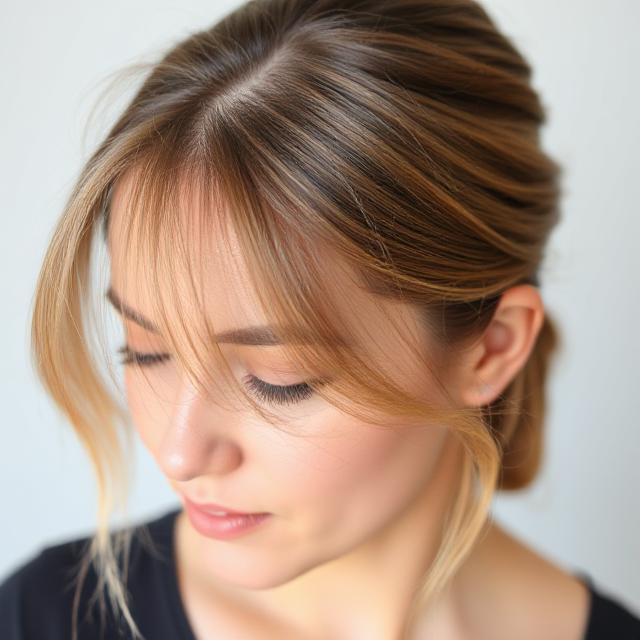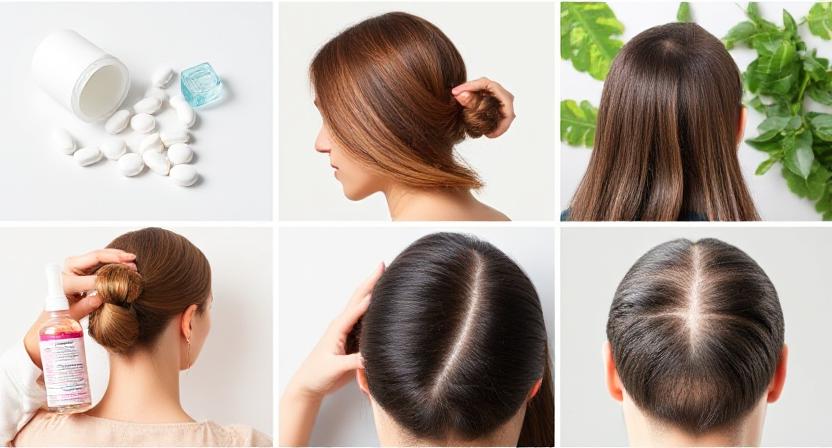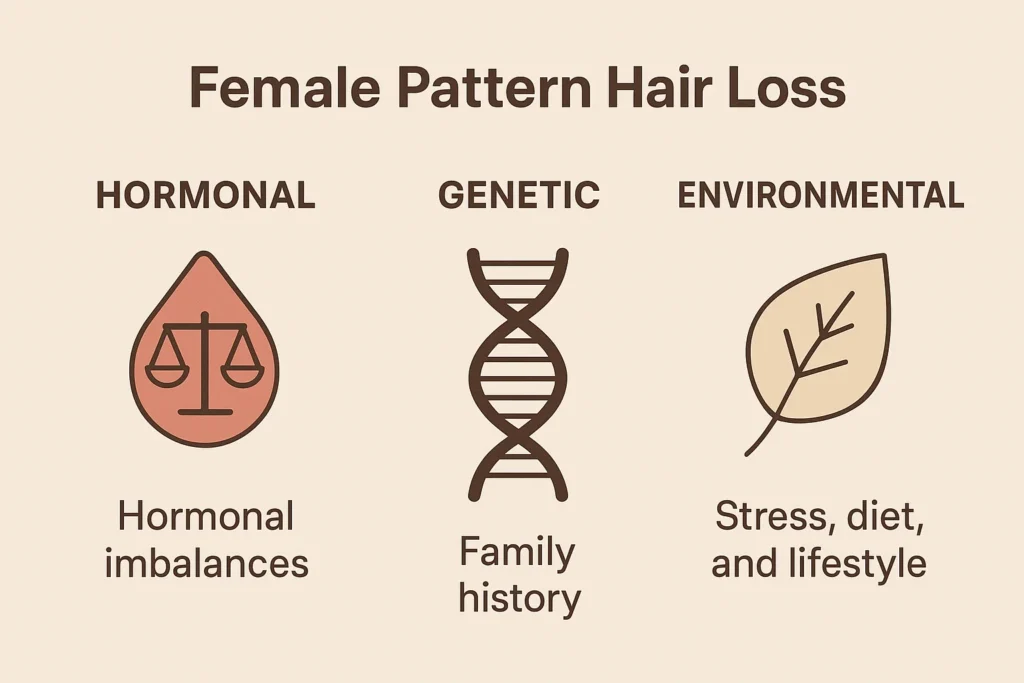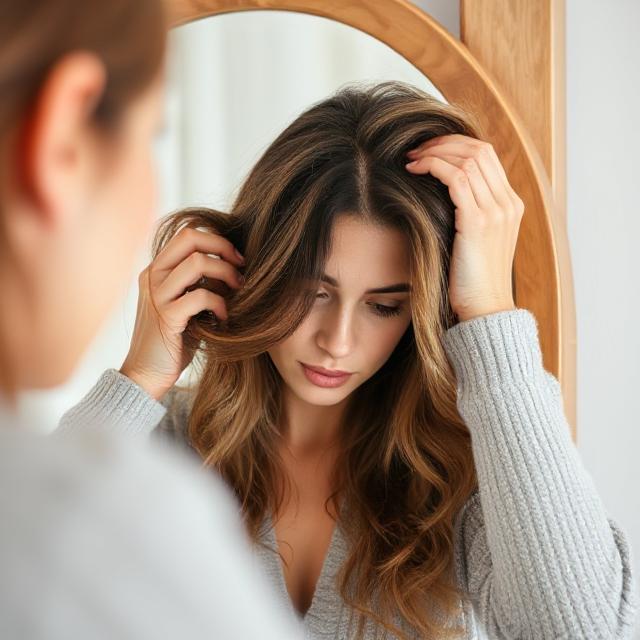Learn the causes of female pattern hair loss and discover effective treatments, lifestyle changes, and prevention tips to support women’s hair health.
What Is Female Pattern Hair Loss?

Female pattern hair loss, also known as androgenetic alopecia, is a common form of hair thinning in women. It typically presents as a gradual thinning over the crown and part line, while the frontal hairline often remains intact.
Hair is often described as a woman’s crown of beauty, symbolizing confidence, identity, and self-expression. When hair begins to thin or fall out, it can create emotional distress, lower self-esteem, and even affect social interactions.
Female pattern hair loss (FPHL), medically known as androgenetic alopecia, is the most common type of hair loss in women. Studies suggest that nearly 40% of women experience noticeable hair thinning by the age of 50, and the numbers rise significantly after menopause.
Unlike temporary shedding that can occur due to stress, illness, or pregnancy, female pattern hair loss is usually progressive. It often starts subtly — perhaps with a widening part line or reduced volume at the crown — and becomes more noticeable over time. While it cannot always be completely prevented or reversed, understanding the causes and exploring available solutions can make a significant difference.
This article provides an in-depth look at the causes of female pattern hair loss and explores medical, lifestyle, and preventive solutions that empower women to take control of their hair health.
Causes of Female Pattern Hair Loss
Hair loss in women is rarely caused by a single factor. Instead, it’s usually the result of a combination of biological, hormonal, and lifestyle influences. Below are the most common causes:
1. Genetics
Hereditary factors play the largest role in female pattern hair loss. If your mother, grandmother, or other close female relatives experienced thinning hair, the likelihood of developing it yourself increases. Unlike men, where baldness often occurs in defined areas, women tend to experience diffuse thinning across the scalp, particularly at the crown.
2. Hormonal Changes
Hormones significantly impact hair growth. Estrogen generally supports healthy, thick hair, while androgens (male hormones such as testosterone) can shrink hair follicles and shorten the hair growth cycle. Situations that disrupt hormonal balance often trigger or worsen hair loss, including:
-
Menopause: Lower estrogen levels allow androgens to exert more influence, leading to thinning.
-
Polycystic Ovary Syndrome (PCOS): This condition causes elevated androgen levels, resulting in both hair thinning on the scalp and excess hair growth elsewhere.
-
Pregnancy and Postpartum: Hormonal fluctuations after childbirth often lead to temporary shedding, which sometimes uncovers an underlying predisposition to FPHL.
3. Age
As women age, hair naturally becomes finer and follicles shrink, producing thinner strands. By the 60s and 70s, female pattern hair loss becomes much more noticeable.
4. Medical Conditions
Certain health problems can either mimic or accelerate female pattern hair loss. These include:
-
Thyroid disorders (overactive or underactive thyroid).
-
Nutrient deficiencies (iron, vitamin D, zinc, protein).
-
Chronic illnesses such as autoimmune conditions.
5. Lifestyle Factors
While genetics and hormones are the primary culprits, everyday habits can worsen the problem. Common triggers include:
-
Crash diets or poor nutrition.
-
High levels of chronic stress.
-
Excessive heat styling or harsh chemical treatments (bleaching, straightening).
-
Tight hairstyles (braids, ponytails, buns) that pull on follicles.
Understanding these causes helps women address not just the visible thinning but also the underlying issues contributing to hair loss.
Recognizing Symptoms of Female Pattern Hair Loss
- Gradual overall thinning on the top of the scalp
- Widening of the part line
- Reduced hair volume
- No complete bald patches (unlike alopecia areata)
Tip: Early detection can improve treatment outcomes.
Solutions and Treatments

Although female pattern hair loss cannot always be cured, many women successfully manage and even improve their condition with proper care. Treatment works best when started early.
1. Medical Treatments
-
Minoxidil (Topical): The only FDA-approved treatment for female pattern hair loss. It works by prolonging the growth phase of the hair cycle and encouraging follicles to produce thicker strands. Results usually appear after 4–6 months of consistent use.
-
Oral Medications: Doctors may prescribe medications like spironolactone (an anti-androgen) to help block the effects of male hormones on hair follicles. In some cases, low-dose oral minoxidil is also used under supervision.
-
Hormone Therapy: Women with PCOS or post-menopausal hair loss may benefit from hormone-regulating treatments.
2. Nutritional Support
Nutrition is a cornerstone of healthy hair. Deficiencies in iron, vitamin D, biotin, or zinc can accelerate thinning. To support hair growth:
-
Eat a balanced diet with lean protein, leafy greens, and whole grains.
-
Include omega-3 fatty acids from salmon, chia seeds, or flaxseeds.
-
Consider supplements designed for hair health if dietary intake is insufficient.
3. Advanced Therapies
-
Platelet-Rich Plasma (PRP) Therapy: Involves drawing a small amount of the patient’s blood, processing it to concentrate growth factors, and injecting it into the scalp. Research shows promising results for stimulating dormant follicles.
-
Low-Level Laser Therapy (LLLT): Laser combs, helmets, or caps use red light to encourage follicle activity.
-
Hair Transplant Surgery: In severe cases, transplanting healthy follicles from the back of the head to thinning areas offers a permanent solution.
4. Lifestyle and Hair Care Adjustments
Simple changes can protect existing hair and prevent further damage:
-
Avoid frequent bleaching, relaxing, or perming.
-
Limit heat styling and always use a heat protectant.
-
Massage the scalp regularly to improve blood flow.
-
Use gentle, sulfate-free shampoos and conditioners.
Prevention and Best Practices

While genetics can’t be changed, certain preventive strategies can slow the progression of female pattern hair loss:
-
Maintain a nutrient-rich diet.
-
Manage stress with mindfulness, yoga, or relaxation techniques.
-
Schedule regular check-ups to monitor hormone and thyroid health.
-
Treat dandruff or scalp irritation early to prevent follicle damage.
-
Protect hair from UV rays by wearing hats in the sun.
When to Consult a Dermatologist or Trichologist

Seek professional advice if:
- Hair thinning worsens rapidly
- You notice scalp redness, itching, or inflammation
- Home treatments aren’t effective
FAQs
Q: Can female pattern hair loss be completely cured?
No, but it can be managed effectively. Treatments like minoxidil, PRP, or hair transplants can improve density and slow progression.
Q: What’s the difference between female pattern hair loss and normal shedding?
Shedding involves temporary loss of hair that usually regrows, while FPHL is progressive thinning that leads to permanent miniaturization of follicles.
Q: At what age does it typically begin?
It can start as early as the 20s, but is most common after the age of 40 and post-menopause.
Q: Can stress alone cause female pattern hair loss?
Stress doesn’t directly cause FPHL, but it can worsen it by disrupting the hair growth cycle and triggering telogen effluvium (temporary shedding).
Q: Are natural remedies like oils effective?
Oils like rosemary or castor oil may improve scalp health and circulation but are rarely sufficient on their own. They work best when combined with medical treatments.
Conclusion
Female pattern hair loss is a widespread issue that impacts not just physical appearance but also emotional well-being. While it may not always be preventable, understanding the causes and taking proactive steps with medical treatments, nutrition, and lifestyle adjustments can make a significant difference.
Women who notice thinning should consult a healthcare provider or dermatologist early, as timely intervention often delivers the best results. With the right care, it is possible to protect your hair, slow down progression, and restore both hair density and self-confidence.




Pingback: Women’s Skin Health: Complete Guide to Common Skin Condition - SheCure